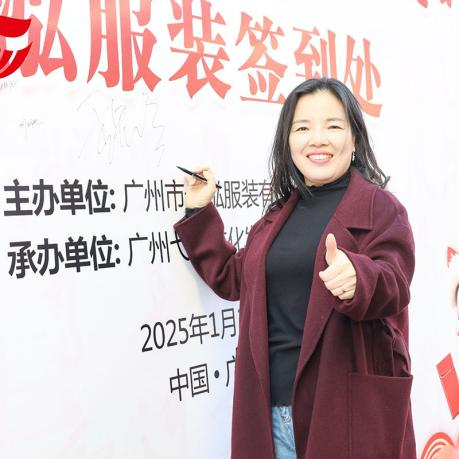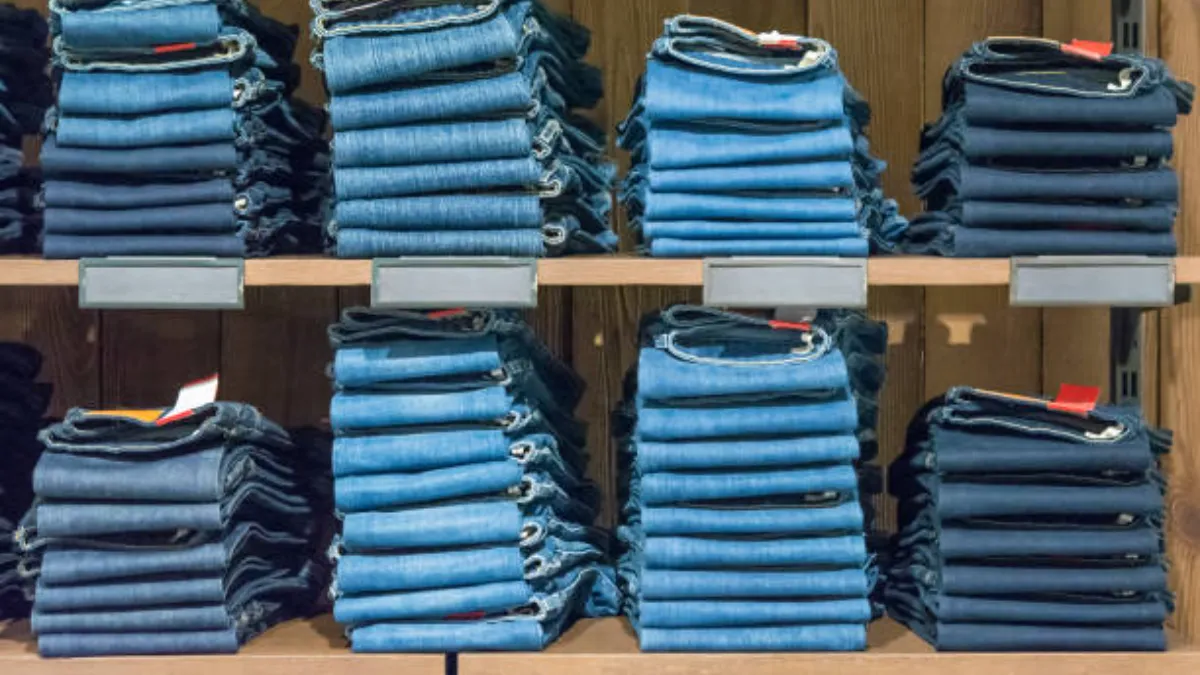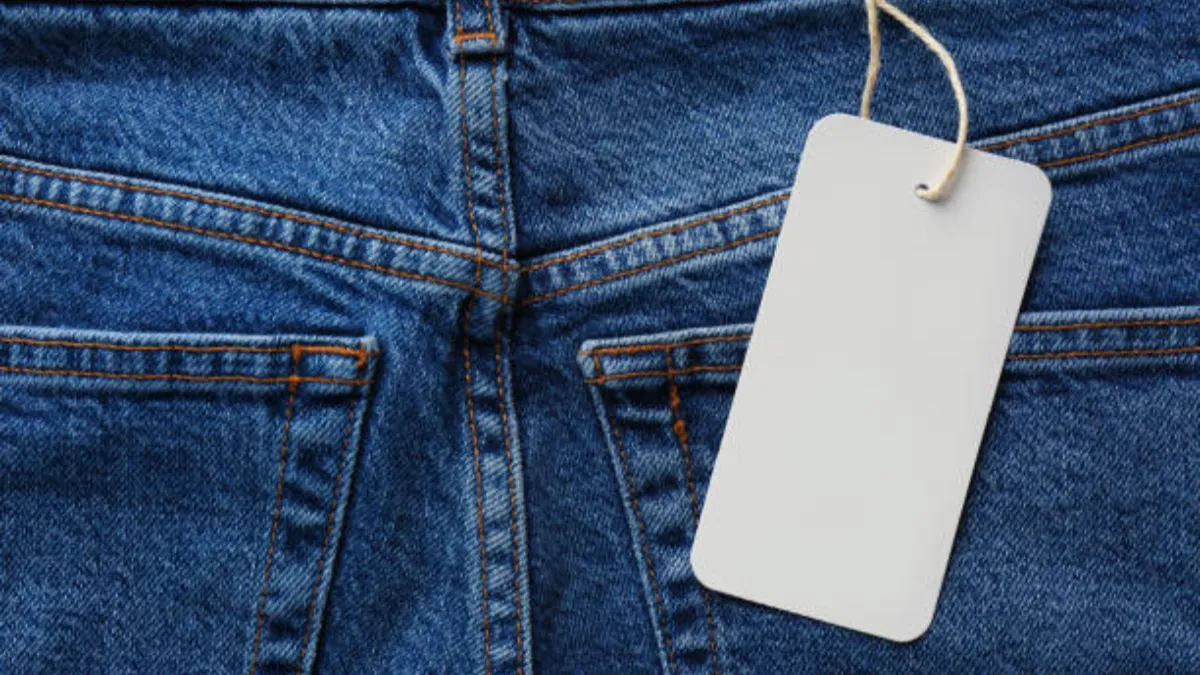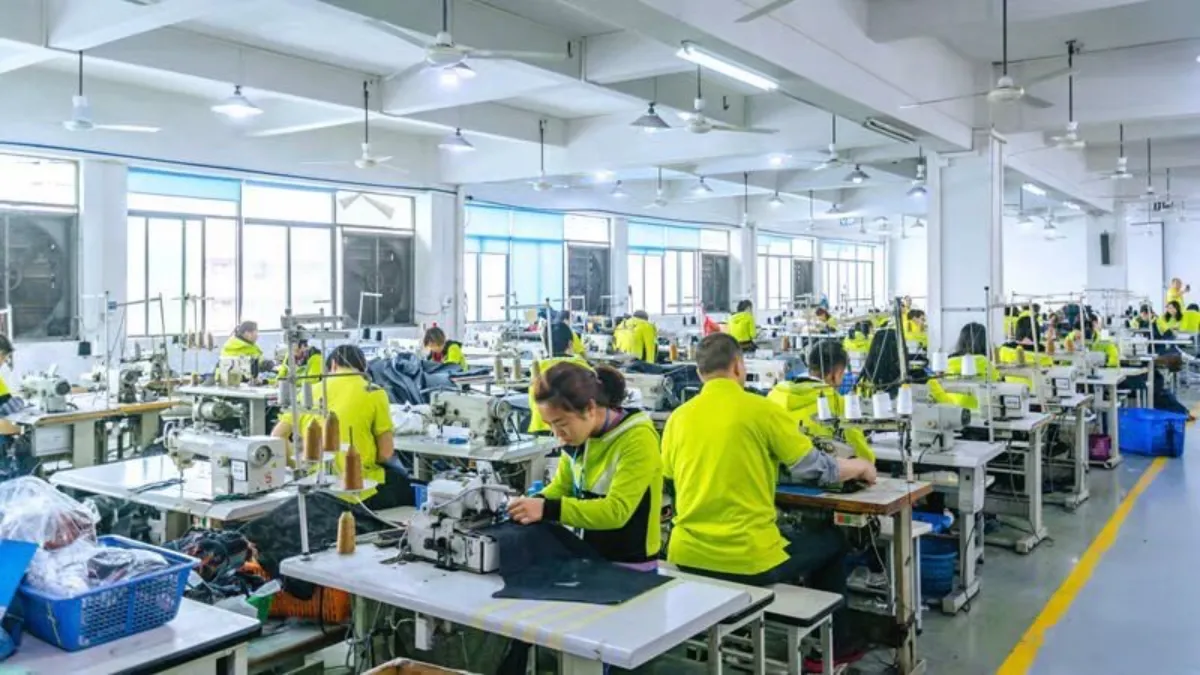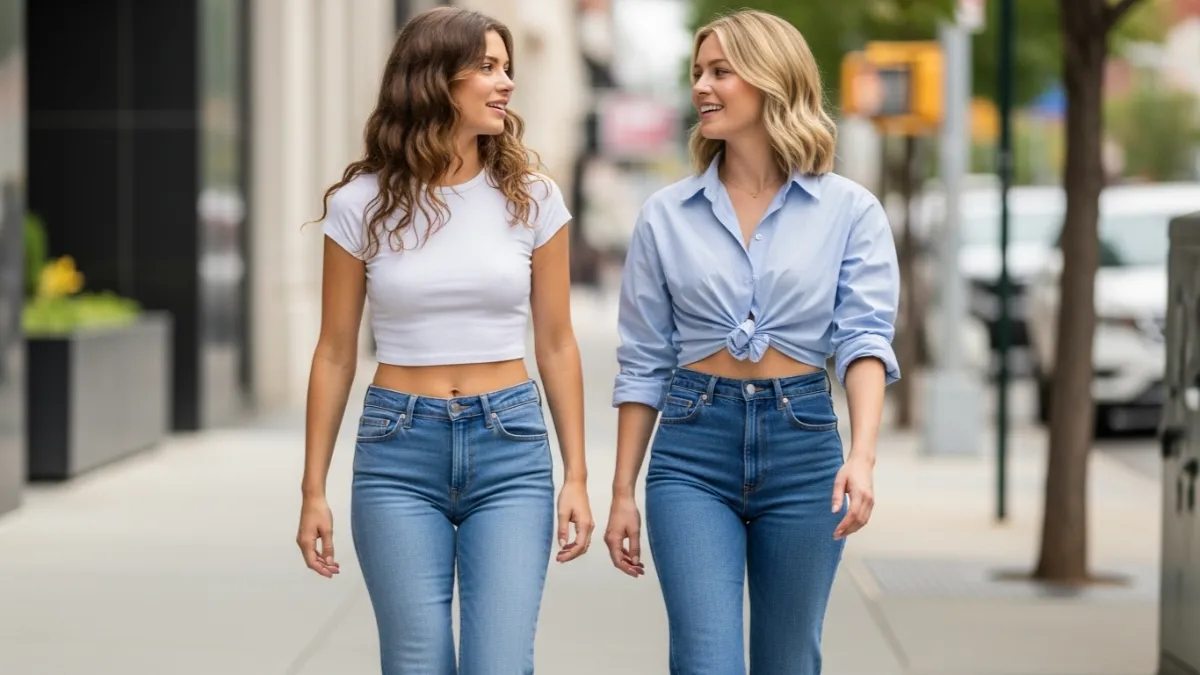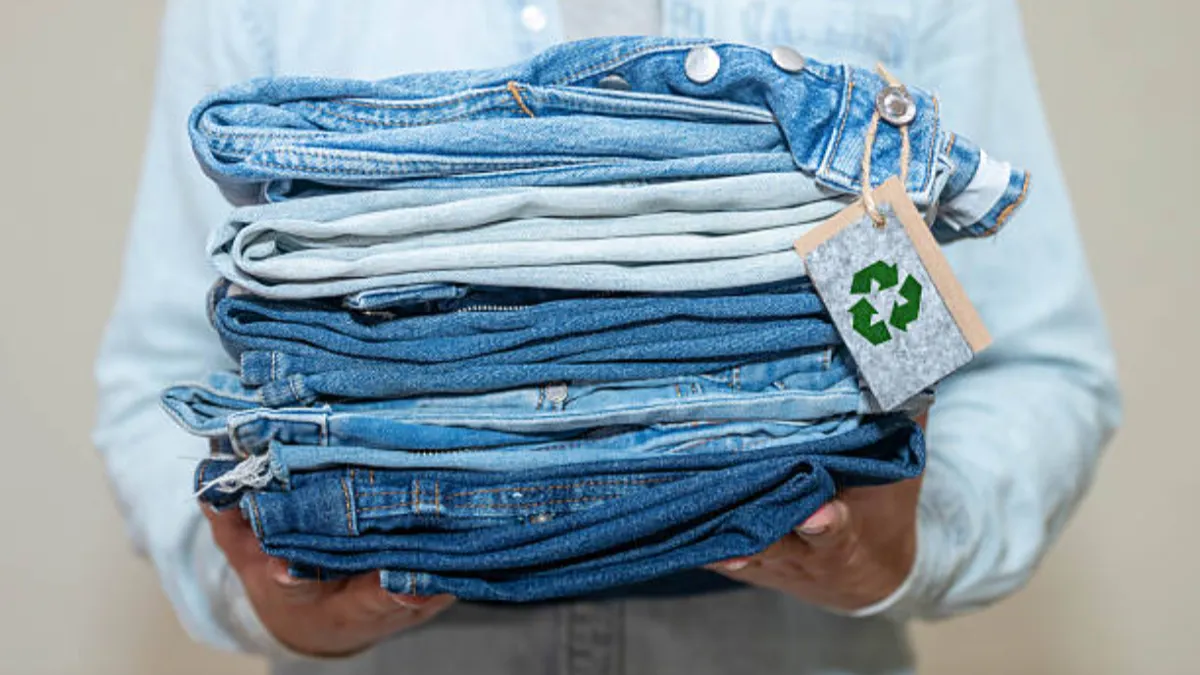Selecting the right denim fabric is one of the most important steps in developing a high-quality pair of jeans. The type of fiber, yarn, плетение, and finishing method all affect how jeans look, чувствовать, and perform over time. This guide explains the main features of denim fabrics and provides clear advice for designers, buyers, and brand owners who want to make informed choices.
Essential Insights for Selecting Denim Fabric
- Choosing the right denim fabric is crucial for achieving durability and desired fit.
- Understanding fabric weight and stretch influences the sewing process and final garment comfort.
What Is Denim Fabric?
Denim is a woven cotton fabric with a twill structure, typically made with indigo-dyed warp yarns and undyed weft yarns. This construction gives denim its diagonal texture and high durability. Modern denim production combines traditional techniques with new technologies to meet various fashion and performance needs.
Fiber Composition
- 100% Хлопок: Traditional denim fiber offering strength, breathability, and a natural feel. It’s durable, easy to dye, and develops a distinct fade pattern over time.
- Хлопок + Elastane (1–3%): Adds flexibility and recovery, ideal for slim or comfort fits without losing the look of authentic denim.
- Хлопок + Polyester (up to 20%): Increases fabric stability and reduces shrinkage and wrinkles, improving production consistency.
- Хлопок + Tencel™ / Modal: Produces a softer, smoother surface with a slight sheen. These fibers also absorb moisture well and support sustainable production goals.
Manufacturers such as Джинсы Чанхун often use certified organic cotton or recycled fibers to meet growing sustainability standards.
Yarn Type and Spinning Method
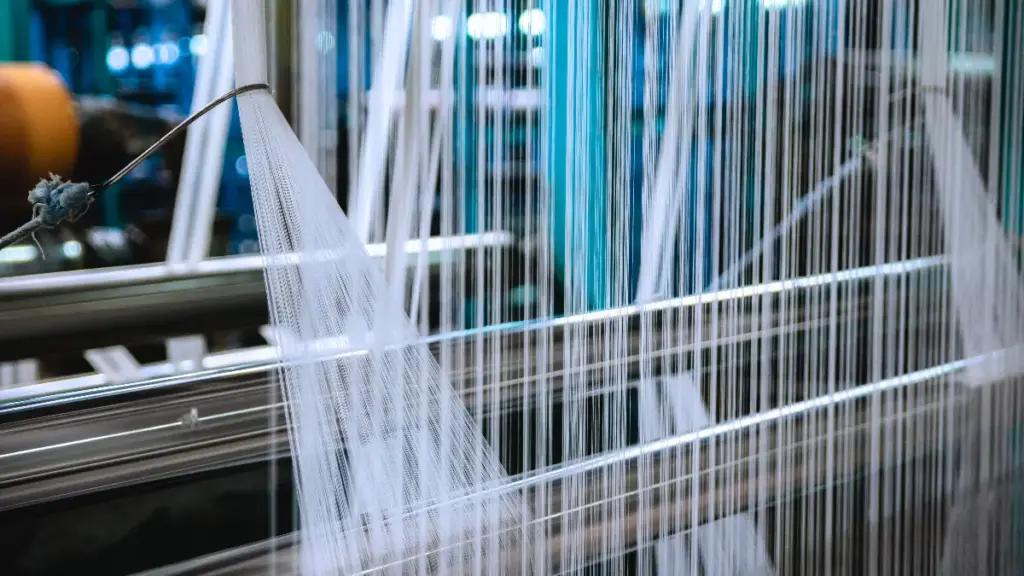
- Ring-Spun Yarn: Made by twisting and thinning fibers for a stronger, more durable yarn with natural irregularities. Common in premium denim for a rich texture.
- Open-End Yarn: Produced by rotor spinning, creating a uniform, slightly coarser texture. It’s cost-effective and suitable for large-scale production.
- Core-Spun Yarn: Features an elastane or polyester core wrapped with cotton, combining strength, эластичность, and comfort — essential for stretch denim.
- Dual Ring-Spun: Uses ring-spun yarn for both warp and weft, giving excellent durability and authentic vintage appearance.
Denim Weave Types
- 3×1 Right-Hand Twill: The standard weave used in most jeans; provides a clear diagonal texture and high tensile strength.
- Left-Hand Twill: Twilled in the opposite direction, producing a smoother, softer surface and slightly brighter color tone.
- Broken Twill: Alternates the twill direction, minimizing leg twisting during wear. Common in comfort or casual jeans.
- Plain Weave and Variations: Less common, used in lightweight denim or shirting fabrics for flexibility and breathability.
Вес ткани
Denim fabric weight is measured in ounces per square yard (oz/yd²), indicating the density and thickness of the cloth. It is mainly influenced by yarn count, weave tightness, and fiber composition. Heavier fabrics tend to be stronger and stiffer, while lighter ones offer comfort and flexibility.
- Легкий вес (7–9 oz): Thin and breathable, ideal for shirts, summer jeans, or relaxed fits. Provides soft drape and quick drying but less abrasion resistance.
- Midweight (10–12 унций): Balanced comfort and structure, suitable for most everyday jeans. This weight is widely used for men’s and women’s fashion lines.
- Heavyweight (13–16 унций): Dense and firm, preferred for необработанный деним or durable workwear styles. Retains shape and develops strong fading effects.
- Extra Heavy (16 oz+): Specialty denim with a rigid hand feel, used in premium or collector’s items. Produces high-contrast creases over time.
Dyeing and Finishing Techniques
Denim’s final appearance and performance are largely determined by how it is dyed and finished. Dyeing affects color depth and fading behavior, while finishing adjusts texture, усадка, and touch.
Common Dyeing Methods:
- Крашение веревки: Twisted yarn bundles pass through multiple indigo baths, keeping the core white. Creates a natural fading effect and deep blue tone; used in high-end denim.
- Слэшер Крашение: Continuous warp sheet dyeing where yarns are coated evenly with indigo. Efficient for large-scale production with consistent results.
- Sulfur Dyeing: Produces black, gray, or color-tinted denim. Often combined with indigo for layered hues.
- Pigment Dyeing: Applies color to the fabric surface rather than the fiber core, achieving unique washed or vintage looks.
Common Finishing Techniques:
- Sanforizing: Pre-shrinks the fabric to maintain size stability during washing.
- Mercerizing: Treats cotton fibers with alkali to enhance luster, dye uptake, and strength.
- Ферментный стирк / Bio-Finishing: Uses natural enzymes to soften fabric and remove fuzz.
- Resin Coating: Adds a crisp hand feel and modern appearance, often used in fashion denim.
- Brushing or Sanding: Mechanically softens the surface for comfort and aged aesthetics.
Texture and Hand Feel
- Surface Character: Fabrics can be slubby, чистый, or crosshatched — each giving a different visual depth and touch sensation.
- Жесткий деним: Firm structure and raw texture; softens gradually with wear, ideal for traditional jeans.
- Soft or Brushed Denim: Mechanically treated for a smooth surface, suitable for comfort-driven or women’s styles.
- Растяжение джинсовой ткани: Feels elastic and adaptive to body movement, balancing flexibility and recovery.
Your Denim Manufacturing Partner
Unlock the potential of your denim line with Changhong Garment. Offering flexible MOQs, быстрая выборка, and compliance-ready products, we cater to startups and major brands alike. Partner with us for trend-driven styles at competitive prices and elevate your denim offerings.
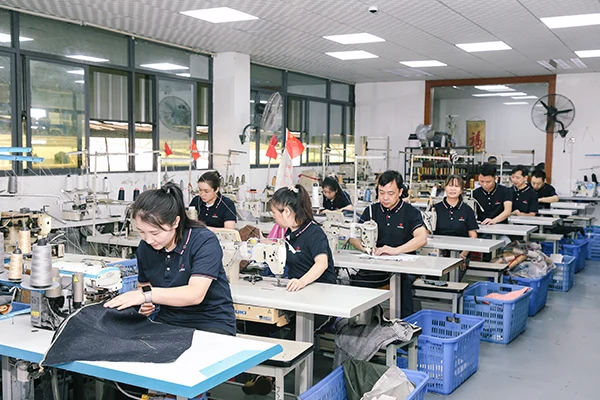
How to Choose the Right Denim Fabric for Different Body Types and Lifestyles
The table below summarizes the most suitable denim types, weights, and stretch levels for different body types and purposes, helping brands and consumers make smarter denim fabric selections.
| Body Type / Lifestyle | Recommended Denim Weight | Stretch Level | Best Fabric Type | Key Features & Benefits | Ideal For |
|---|---|---|---|---|---|
| Petite / Slim Build | 8–10 oz (легкий) | 2–4% elastane (high stretch) | Stretch denim, cotton-spandex blend | Мягкий, гибкий, enhances curves without bulk | Skinny jeans, jeggings, повседневная одежда |
| Curvy / Hourglass Figure | 10–12 унций (midweight) | 1–2% elastane (moderate stretch) | Cotton-polyester-elastane blend | Contours the body, offers comfort and recovery | Буткат, straight-leg jeans |
| Атлетический / Muscular Build | 11–13 oz (mid-heavy) | Minimal stretch (≤1%) | Ring-spun cotton denim | Structured and durable, resists overstretching | Slim-fit, tapered jeans |
| Plus Size / Full Figure | 10–12 унций (midweight) | 2–3% elastane | Stretch twill denim | Smoothing effect, good flexibility and shape retention | Высотное, relaxed or comfort-fit jeans |
| Workwear / Outdoor Lifestyle | 13–16 унций (heavyweight) | Non-stretch | 100% cotton raw denim | Extremely durable, develops personalized fades | Carpenter, straight or relaxed jeans |
| Urban / Fashion-Oriented Lifestyle | 10–13 oz (midweight) | 1–2% elastane | Slub denim, coated denim | Unique texture, sleek surface, modern look | Slim or cropped fashion jeans |
| Hot Climate / Summer Wear | 7–9 oz (легкий) | 1–2% stretch | Lightweight cotton denim | Breathable and soft, ideal for warm weather | Shorts, платья, relaxed fits |
| Cold Climate / Winter Wear | 13–16 унций (heavyweight) | Minimal stretch | Raw or brushed denim | Provides warmth and body structure | Rigid jeans, куртки |
| Eco-Conscious Consumer | 9–12 унций | Переменная (0–2%) | Organic cotton, переработанный деним, Tencel blend | Устойчивый, мягкий, с низким воздействием краска | Everyday jeans, ethical fashion lines |
Main Types of Denim Fabrics for Custom Jeans
Below are the main denim fabric types commonly used in custom jeans manufacturing. Each fabric offers distinct characteristics in texture, долговечность, and aesthetic performance, helping designers and brands choose the right match for their market and customer needs.
1. Джинсовая джинсовая
Selvedge denim is woven on traditional shuttle looms that produce narrow fabric with tightly bound edges. The result is a compact, high-density weave known for its strength and clean finish. It’s often left unwashed to highlight its natural character.
Why Choose Selvedge:
- Dense weave provides superior strength and structure
- Finished edges prevent fraying and enhance garment longevity
- Ages beautifully, developing distinctive wear patterns over time
Лучше всего для:
Premium custom jeans, heritage-inspired designs, and consumers seeking durability with authentic craftsmanship
2. Сырой (Немытый) Джинсовая
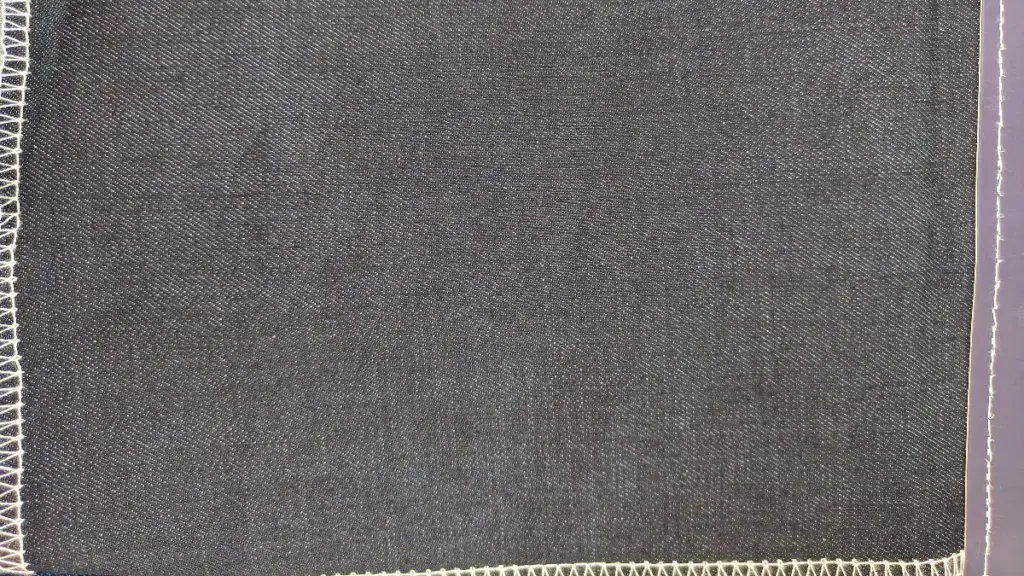
Raw denim refers to untreated fabric that has not been washed or distressed after dyeing. It starts stiff and dark but gradually molds to the wearer’s body, creating unique wear patterns over time.
Why Choose Raw Denim:
- Authentic, customizable fading and creasing
- Long lifespan with proper care
- Ideal for showcasing craftsmanship and dye quality
Лучше всего для:
High-end, custom-fit jeans and brands emphasizing authenticity
3. Растяжение джинсовой ткани
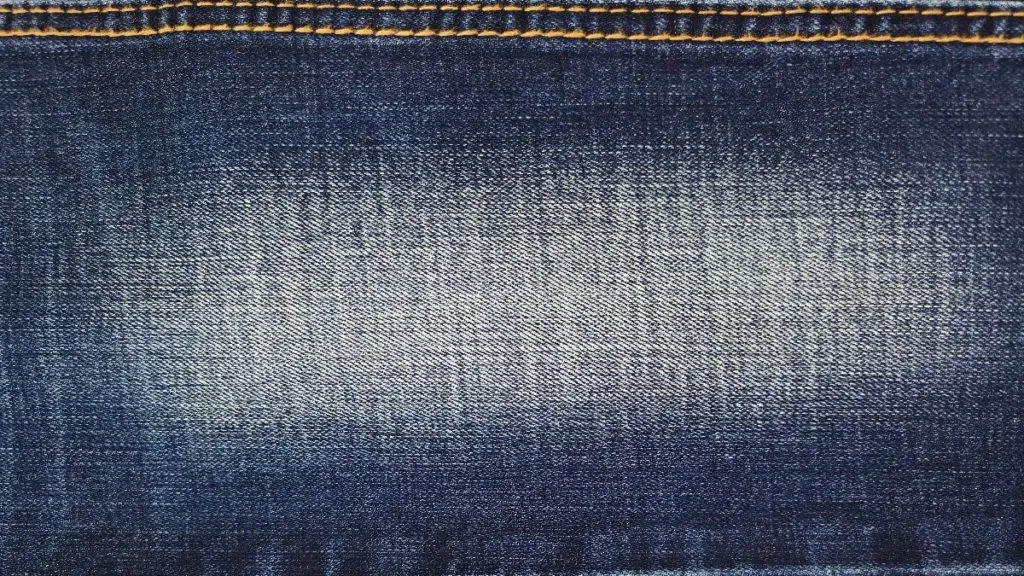
Stretch denim incorporates elastane (usually 1–3%) into the cotton yarn to enhance flexibility and comfort. It retains the look of classic denim while offering improved movement.
Why Choose Stretch Denim:
- Provides a snug yet comfortable fit
- Maintains shape after repeated wear
- Ideal for slim or skinny styles
Лучше всего для:
Современный, fashion-forward fits and women’s or active denim lines
4. Легкая джинсовая ткань
Lightweight denim typically weighs between 6–10 oz per square yard, making it soft, breathable, and easier to drape. It’s less rigid than traditional denim and suitable for warm-weather wear.
Why Choose Lightweight Denim:
- Increased comfort and flexibility
- Ideal for layering or non-traditional silhouettes
- Easier to sew and manage in production
Лучше всего для:
Повседневный, summer, or lifestyle-oriented collections
5. Heavyweight Denim
Heavyweight denim ranges from 14 унция и выше, offering exceptional durability and structure. It’s often chosen for workwear, vintage reproductions, or premium raw jeans.
Why Choose Heavyweight Denim:
- High durability and abrasion resistance
- Creates strong, long-lasting fades
- Offers a solid, substantial hand feel
Лучше всего для:
Workwear, rugged styles, and premium heritage jeans
6. Slub Denim
Slub denim uses unevenly spun yarns, resulting in natural texture and irregular fading patterns. It’s prized for its character and depth, which appear more prominently with wear.
Why Choose Slub Denim:
- Unique, three-dimensional texture
- Attractive fade patterns
- Adds visual interest to classic silhouettes
Лучше всего для:
Artisan or vintage-inspired denim brands and textured fashion куски
7. Органическая джинсовая ткань
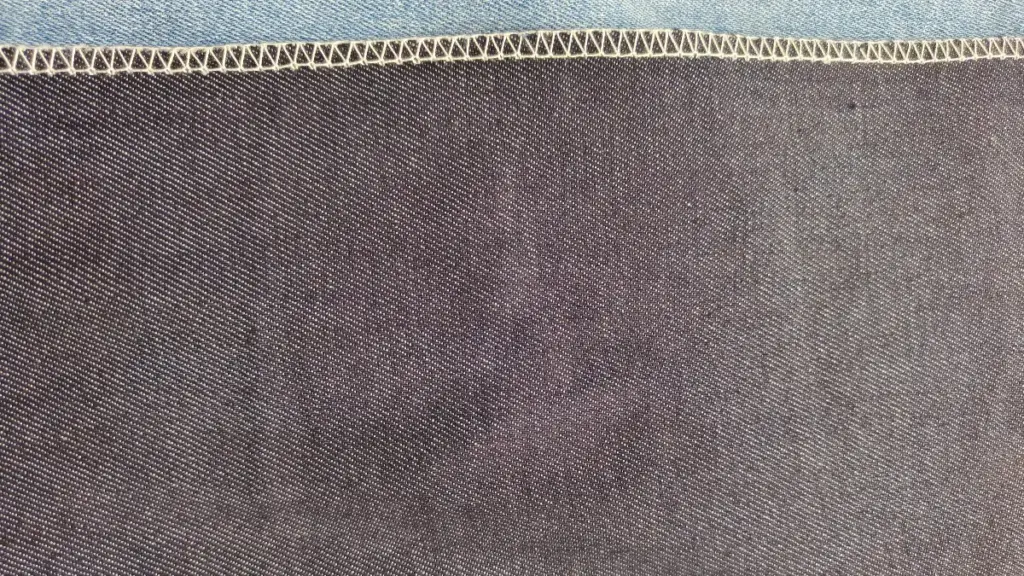
Organic denim is made from cotton grown without synthetic pesticides or fertilizers. It supports sustainability and transparency in textile sourcing while maintaining the same performance as conventional denim.
Why Choose Organic Denim:
- Eco-friendly and ethically sourced
- Comparable strength and comfort to standard cotton
- Supports conscious consumer markets
Лучше всего для:
Sustainable fashion labels and eco-conscious consumers
8. Coated Denim
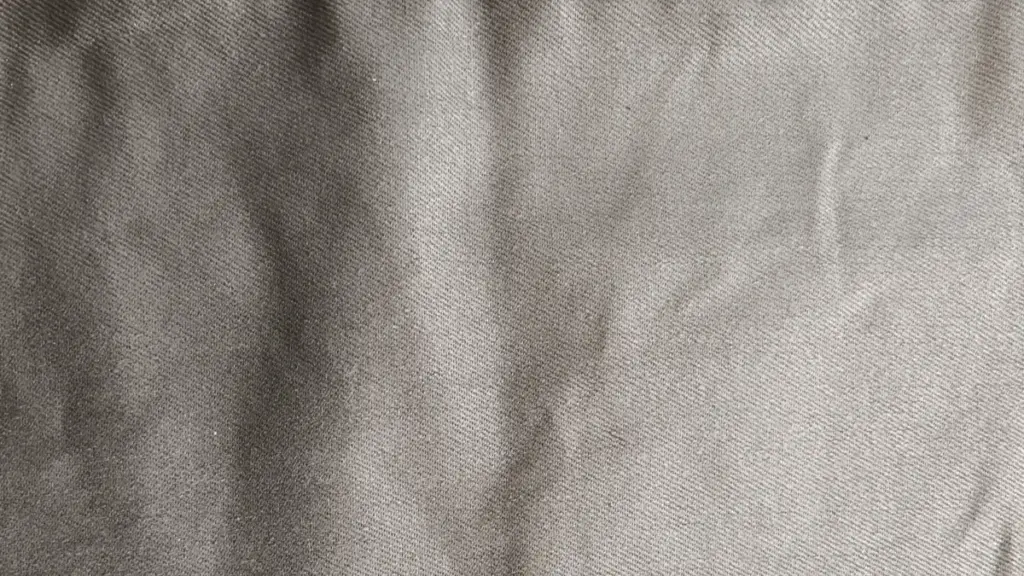
Coated denim features a wax or resin layer applied to the fabric surface to create a leather-like sheen or enhanced durability. It’s popular for fashion-forward or performance-oriented jeans.
Why Choose Coated Denim:
- Distinctive glossy or matte finish
- Enhanced protection against moisture and wear
- Adds visual sophistication and edge
Лучше всего для:
Urban, уличная одежда, or contemporary high-fashion collections
Denim Fabric Trends in 2026
he denim market continues to evolve in technology and sustainability. Key trends for 2026 include:
- Sustainable Production
Use of organic cotton, water-saving indigo dyeing, laser fading, and biodegradable coatings are becoming industry standards. Consumers expect traceable and transparent supply chains. - Comfort and Performance
Hybrid yarns such as DualFX and LYCRA® Adaptiv allow jeans to stretch while keeping shape. These fabrics combine traditional denim aesthetics with activewear functionality. - Color and Texture Innovation
Mills are producing new shades like off-black, gray-blue, and ecru, as well as textured crosshatch surfaces. These updates fit minimalist and gender-neutral fashion trends.
Matching Fabric to Your Brand Identity or Design Intent
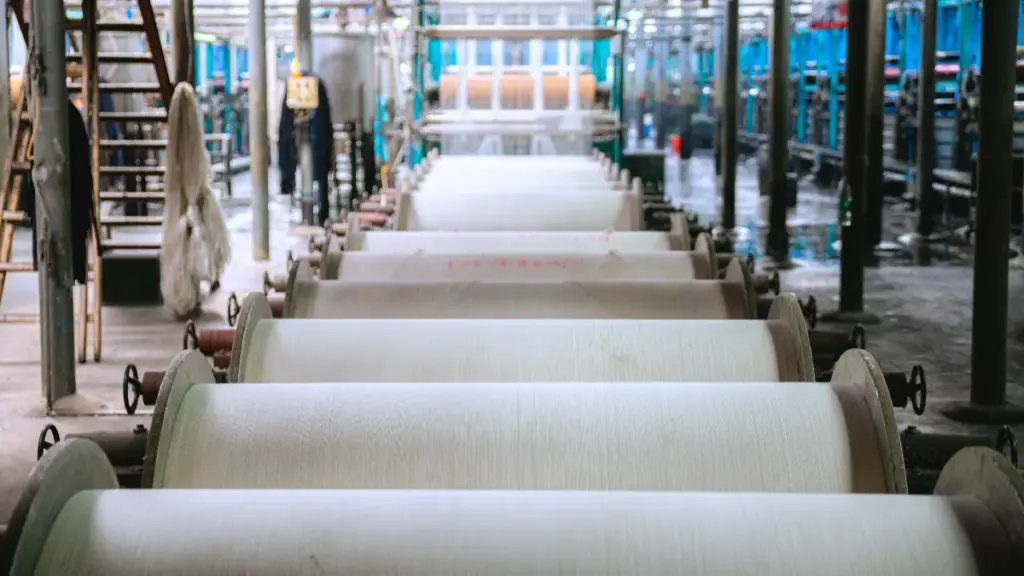
Fabric selection should match your brand story and design purpose. It communicates quality, personality, and market positioning.
Heritage or Workwear Brands: Choose heavyweight ring-spun or selvedge denim (13–16 унций) for durability and authenticity. Rope-dyed indigo enhances the vintage fade effect customers love.
Streetwear and Contemporary Labels: Midweight (10–12 унций) stretch denim or slub-textured fabrics deliver comfort, универсальность, and a modern silhouette that fits today’s urban style.
Luxury or Designer Brands: Opt for high-consistency, finely woven denim from premium Japanese or Italian mills. These fabrics ensure deep color uniformity and a refined hand feel ideal for elevated collections.
Sustainable or Ethical Brands: Organic cotton, Tencel, or hemp-blend denim with low-impact dyeing supports eco-conscious messaging and growing green fashion trends.
At Changhong Jeans, we help brands from startups to boutique designers select fabrics that reflect their vision. Our flexible OEM/ODM service and low MOQ options make it easier to test niche concepts or limited runs while maintaining production quality and brand integrity.
Denim Care and Maintenance Tips for Long-lasting Quality
Well-maintained jeans can last 5–10 years with proper care. A few golden rules:
- Wash less frequently. Air jeans after wearing to preserve color and texture.
- Use cold water and mild detergent. Hot water accelerates fading and fiber wear.
- Turn inside out before washing. Protects the dyed surface.
- Avoid tumble drying. High heat damages elasticity and causes shrinkage.
- Store folded or flat. Hanging can stretch heavy jeans over time.
Ready to Create Your Custom Denim Line?
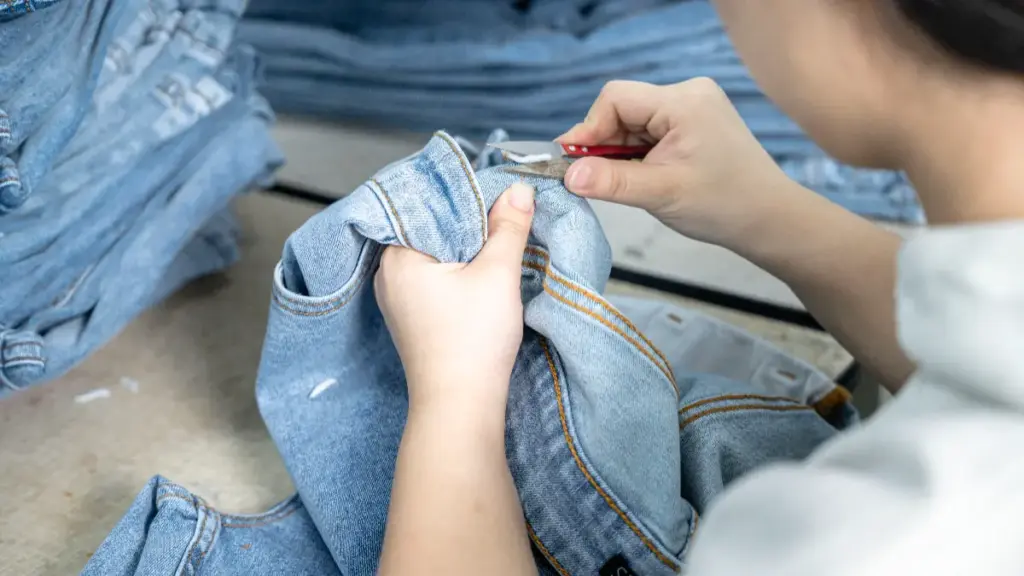
Selecting the right denim fabric requires careful consideration of fiber composition, плетение, weight, and finishing. Each factor affects comfort, долговечность, and overall aesthetic, ensuring your jeans align with your target market and design intent.
С 20 years experience in the denim industry, Changhong Jeans has partnered with brands worldwide, supporting OEM and custom production. Our team provides expert guidance on fabric selection, manufacturing feasibility, and trend alignment.
Get in touch with us today to start designing your custom denim collection.
Часто задаваемые вопросы
How to choose denim fabric?
Consider fiber composition, weight, плетение, потягиваться, and finishing. Match the fabric to the intended fit, стиль, and brand positioning.
Is 98% cotton and 2% elastane stretchy?
Да, the 2% elastane provides moderate stretch, allowing the denim to move comfortably while maintaining shape.
Which type of fabric is best for jeans?
It depends on the intended style and use. Selvedge or heavyweight cotton is ideal for durable, structured jeans, while stretch or midweight denim works for slim or comfort-focused designs.
Is 100% cotton denim better?
100% cotton denim offers durability, natural fading, and a classic feel, but it has minimal stretch and can feel stiff until broken in.

